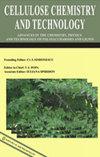乙醇-水混合物环保型棉织物活性染色工艺的实验研究
IF 1.1
4区 农林科学
Q2 MATERIALS SCIENCE, PAPER & WOOD
Cellulose Chemistry and Technology
Pub Date : 2023-07-20
DOI:10.35812/cellulosechemtechnol.2023.57.59
引用次数: 0
摘要
纺织业专业人士一致认为,非常需要开发环境可持续的棉花染色方法。在与传统染色有关的各种问题中,一些主要问题是大量高浓度盐排放出水及其对环境的影响。本研究探讨了在棉织物活性染色中使用乙醇作为溶剂,以降低盐的浓度和水的用量。染色过程采用90:10 (v/v)的乙醇-水混合物。通过周期性地改变染色时间和温度来提高染色的衰竭程度,研究了时间、温度和含盐量对染色的影响,并与常规活性染色进行了比较。观察到溶剂辅助活性染色的色强与常规染色相当。在最佳条件下的染色样品在色差变化和染色方面都具有良好的洗涤牢度,其干腐蚀牢度与水染色样品相似或可接受。然而,与传统的活性染色工艺相比,溶剂辅助活性染色工艺的所有样品都具有更好的湿固牢度。利用复合期望函数对环保活性染色工艺参数进行了优化。溶剂辅助活性染色工艺的最佳工艺参数为80℃、20 g/L盐、60 min染色。本文章由计算机程序翻译,如有差异,请以英文原文为准。
INVESTIGATION INTO AN ECO-FRIENDLY REACTIVE DYEING PROCESS OF COTTON FABRICS USING AN ETHANOL-WATER MIXTURE THROUGH DESIGN OF EXPERIMENT
Textile industry professionals are unanimous that there is a great need to develop environmentally sustainable methods of cotton dyeing. Among various problems related to conventional dyeing, some of the main problems consist in the large volumes of discharge effluent with a high concentration of salt and their impact on the environment. This investigation explores the use of ethanol as a solvent in the reactive dyeing of cotton fabric, to reduce the concentration of salt and the volume of water used. The dyeing process employed a 90:10 (v/v) ethanol-water mixture. Time and temperature were varied periodically to improve the degree of exhaustion, and the effects of time, temperature and salt content were studied and compared with conventional reactive dyeing. It was observed that the colour strength of solvent-assisted reactive dyeing is comparable to the conventional process. The dyed sample under the optimum condition had good wash fastness, both in terms of shade change and staining, and its dry crocking fastnesses were found similar or acceptable in comparison with the water-dyed sample. However, all the samples of the solvent-assisted reactive dyeing process have better wet crocking fastnesses compared to the conventional reactive dyeing process. The process parameters of eco-friendly reactive dyeing have been optimised using the composite desirability function. The optimal process parameters for the solvent-assisted reactive dyeing process were found to be 60 minutes of dyeing at 80 °C with 20 g/L of salt.
求助全文
通过发布文献求助,成功后即可免费获取论文全文。
去求助
来源期刊

Cellulose Chemistry and Technology
工程技术-材料科学:纸与木材
CiteScore
2.30
自引率
23.10%
发文量
81
审稿时长
7.3 months
期刊介绍:
Cellulose Chemistry and Technology covers the study and exploitation of the industrial applications of carbohydrate polymers in areas such as food, textiles, paper, wood, adhesives, pharmaceuticals, oil field applications and industrial chemistry.
Topics include:
• studies of structure and properties
• biological and industrial development
• analytical methods
• chemical and microbiological modifications
• interactions with other materials
 求助内容:
求助内容: 应助结果提醒方式:
应助结果提醒方式:


